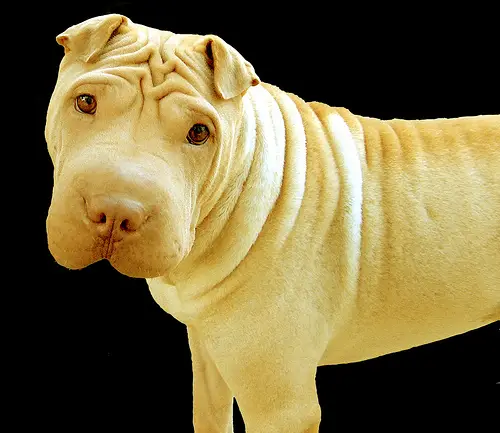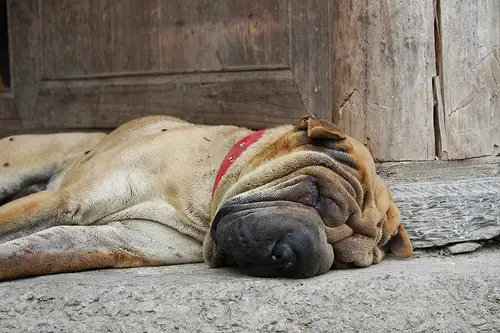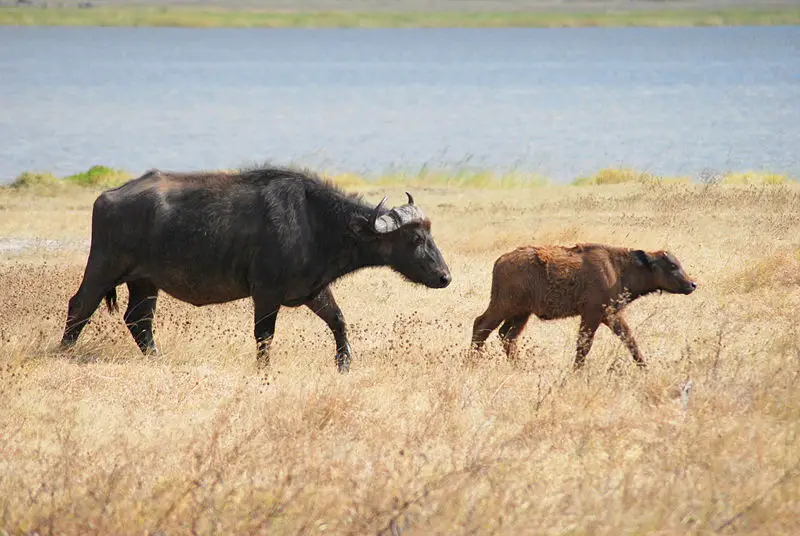Shar pei
Also known as the Chinese Fighting Dog, the Chinese Shar-Pei (or just Shar Pei for short) is a dog famous for its deep wrinkles and blue-black tongue. Its name is derived from the British spelling of the Cantonese word for it, which translates to ‘sand skin’. Although this may seem like a rather weird name, it actually refers to its coat which is short, rough, and prickly. The Guinness Book of World Records and Time magazine once named the Shar Pei as one of the world’s rarest dog breeds. In fact, the American Kennel Club only recognised this breed in 1991 despite the fact that it has existed in China since before 206 BC!
The origins of this dog can be traced to Guangdong, and it has existed in China’s southern provinces for centuries. They were used to help their peasant masters with farming tasks such as herding cattle, as well as a guard dog to protect their human family and their home. They were also used to hunt wild game such as wild pigs. The Chinese nobility also used the shar pei as a fighting dog, but this practice is quite rare especially since after the people’s revolution.
It is thought that this dog shares a common ancestry with the Chow-Chow, the Great Pyrenees, and the Tibetan Mastiff. This is because it has the Chow-Chow’s blue-black mouth and tongue, and the and Great Pyrenees’ double dew claws. Shar pei’s also have triangular ears, a hippopotamus-shaped muzzle, and a high-set tail. However, the original Chinese shar pei looks quite different to the Western shar pei (as in shar pei’s that have been imported into western countries).
Pottery dating back from the Han Dynasty (206 BC) suggests that this dog was present at that time. DNA analysis has found that the shar pei is actually one of the most ancient breeds of dogs. Although the dog was used for protection, farm-work, hunting, and as a guard dog; the shar pei was actually bred for its intelligence, strength, and its scowling face. The loose skin and prickly coast the shar pei is famous for was actually developed to fend off wild boars during hunting. It was developed because when a predator tries to grab onto any of the dog’s loose wrinkles, the dog can twist their skin, turn around, and face its opponent so that it can keep on fighting.
The shar pei has been immortalised in today’s modern culture. It has appeared in two episodes of The Simpsons, Garnier anti-wrinkle cream advertisements in Britain, in Purex toilet paper roll advertisements in Australia and New Zealand, and much more.




